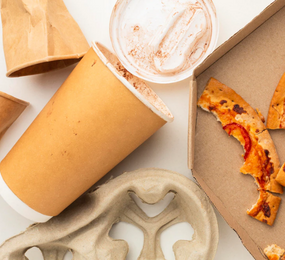In the pursuit of a more sustainable and environmentally responsible future, the food industry is undergoing a significant transformation. One of the key drivers of this change is the adoption of eco-friendly food packaging. This innovative approach aims to reduce the environmental impact of food packaging materials and promote a more sustainable dining experience.
Traditional food packaging, often made from non-biodegradable plastics and other materials, poses a considerable environmental challenge. These materials contribute to pollution, waste, and resource depletion. The excessive use of single-use plastics, in particular, has led to a growing global concern about plastic pollution in oceans and landfills.
Eco-Friendly Food Packaging Defined
Eco-friendly food packaging, as the name suggests, is designed with a strong focus on environmental friendliness. These packaging materials are typically biodegradable, compostable, or recyclable, ensuring that they have a minimal impact on the environment when disposed of or recycled.
Reducing Plastic Waste
One of the primary goals of eco-friendly food packaging is to reduce plastic waste. Instead of relying on conventional plastic containers, food establishments are turning to alternatives like plant-based plastics (bioplastics) and materials such as paper, cardboard, and even edible packaging. These materials break down more easily, mitigating the problem of long-lasting plastic waste.
Energy Efficiency
Eco-friendly packaging options are often more energy-efficient to produce compared to their non-sustainable counterparts. For example, manufacturing biodegradable packaging materials generally requires less energy and reduces greenhouse gas emissions, contributing to a lower carbon footprint.
Consumer Preference
Consumers are increasingly mindful of the environmental impact of their choices. Eco-friendly food packaging resonates with environmentally conscious diners. Food establishments that adopt sustainable packaging not only align with customer values but also enhance their brand reputation.
Challenges and Considerations
While eco-friendly food packaging presents a promising solution, challenges such as cost, availability, and the need for improved recycling infrastructure must be addressed. Businesses also need to strike a balance between sustainability and the functionality of packaging to ensure that the food remains fresh and safe.
Eco-friendly food packaging is a pivotal step toward a more sustainable food industry. It aligns with the global effort to reduce plastic waste, minimize resource consumption, and decrease the carbon footprint of food-related businesses. As the demand for environmentally responsible practices continues to grow, eco-friendly food packaging stands as a tangible solution to help the food industry become more sustainable and eco-conscious. By choosing eco-friendly packaging, both businesses and consumers can contribute to a greener and healthier planet, one meal at a time.
To register or learn more about the Forum please check here: https://bit.ly/3qbznOe
For more information and group participation, contact us: [email protected]
















